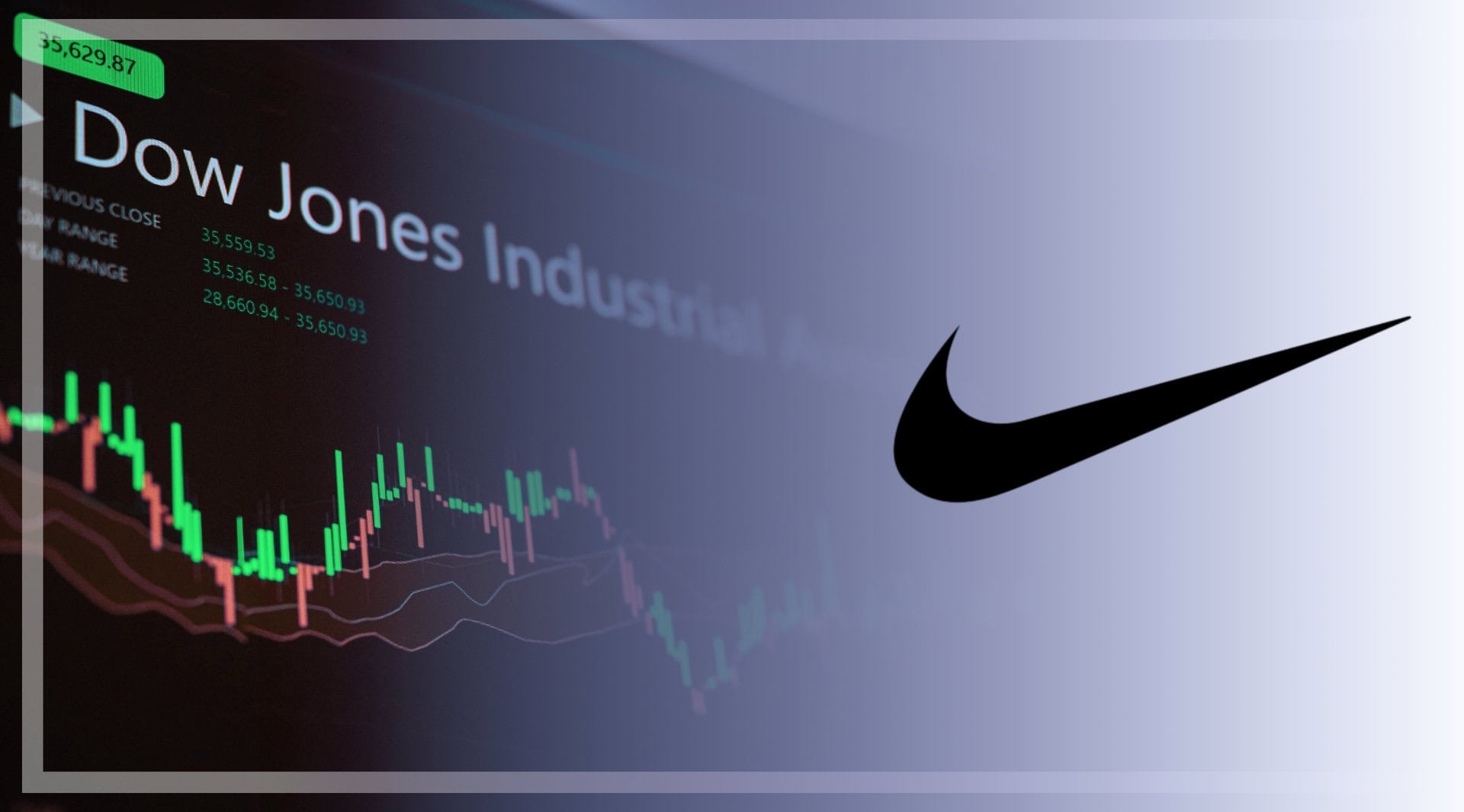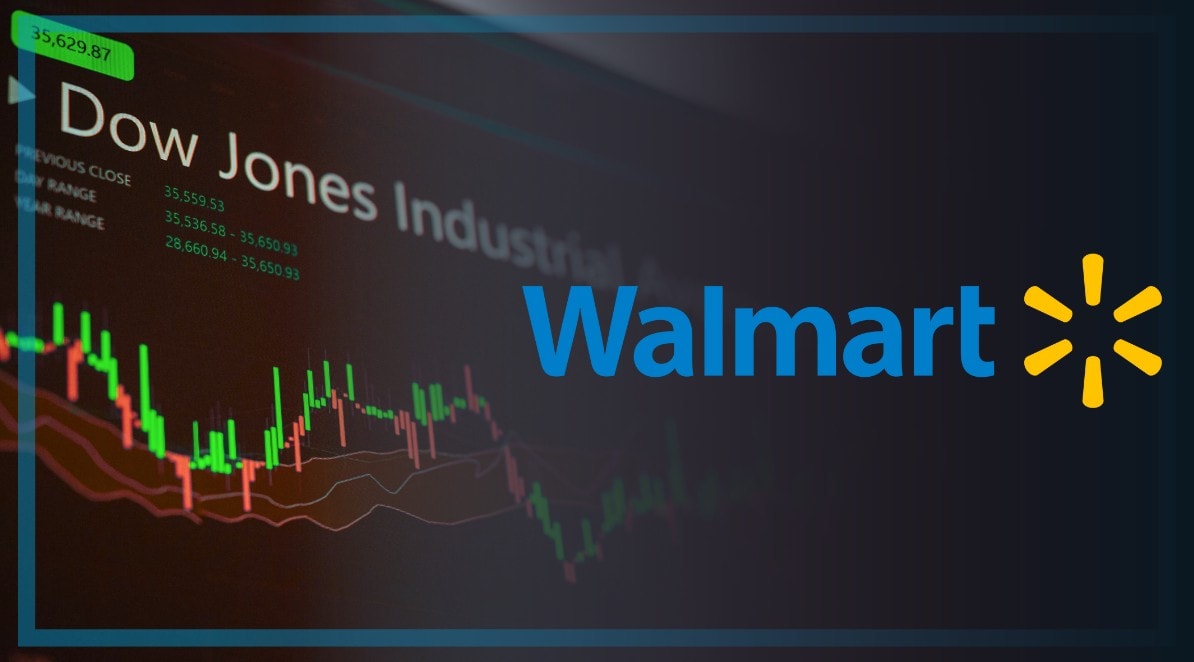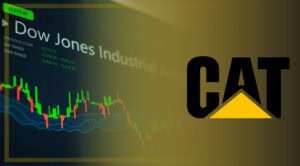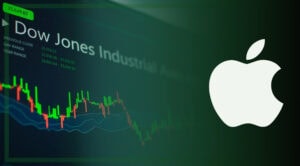Nike (ticker: NKE) entered the Dow Jones Industrial Average (DJIA) in 2013, joining a 30-stock roster that prized household names and market leaders. The index added Nike (alongside Goldman Sachs and Visa) effective September 23, replacing Alcoa and others in a reshuffle that reflected the growing importance of consumer brands and services on Wall Street.
Unlike some legacy members, Nike’s entry into the DJIA cemented its status as a modern powerhouse in athletics and fashion.
DisruptionBanking covers Nike’s journey so far: both prior to its Dow inclusion and after, offering investors insights into NKE performance and where it is headed next.
Nike’s Sprint Prior to Dow Jones
Since joining the Dow Jones, Nike has shown both strength and weakness. In the decade prior (September 1, 2003, and December 31, 2013), NKE delivered a remarkable 526 percent total return — according to Statmuse — far outpacing the Dow’s 59 percent and cementing its status as a consumer powerhouse.
The index has climbed from around 15,400 in 2013 when was included in the DJIA to about 44,785 as at the time of writing. Meanwhile Nike’s price has risen over the same period (2013-2025) from around $31 to $78, representing an approximate 150 percent rise — still solid, though trailing the broader market. The stock peaked around $168 in 2021 on surging e-commerce and athleisure demand, then fell sharply amid supply chain pressures and rising competition.
Nike Stumbles
By early this year, NKE sank to near $52 before recovering and now trading at about $79 (TradingView), as at the time of writing, well above its 2013 level of about $34 (split- and dividend-adjusted).
Performance has been uneven. According to Macrotrends, gains (annual percentage change) of 38 percent in 2019 and 41 percent in 2020 gave way to declines of 29 percent in 2022, 6 percent in 2023, and 29 percent in 2024 as the data graphic below shows.
As at the time of writing, NKE is up roughly 1.9 percent year-to-date, reflecting the volatility of consumer discretionary stocks and its role as part of the Dow Jones index.
Nike NKE annual percentage change 2018-2025. Source: Macrotrends
Nike Picks Up Pace
Fiscal 2025 (year ended May 31) was a resetting year. Nike reported fourth-quarter revenue of $11.1 billion and full-year sales that fell roughly 10 percent to about $46.3 billion, as the company grappled with soft demand across China, North America and Europe, the Middle East, and Africa. NIKE Direct revenue and digital sales were notable weak spots. Nike CEO Elliott Hill framed the period as a turnaround in progress under its “Win Now” plan.
Nike remains profitable but saw margins compress in 2025 after heavy brand and product investments. The company continues to invest in marketing and product development to reclaim momentum, according to Marketing Week. Forbes reports a stepped-up brand push and leadership changes aimed at sharpening focus on performance and athlete relevance.
As one of the Dow Jones’ consumer bellwethers, Nike’s reset year matters beyond its own walls, signaling broader trends in global retail demand.
Nike $NKE jumping in after hours after shattering earnings expectations: $0.54 vs. $0.30 expectation pic.twitter.com/b2PBJZVFrF
— Barchart (@Barchart) March 20, 2025
Wall Street Still Running With Nike
Unlike many pure-growth tech names, Nike returns cash to shareholders. This month, Nike declared a quarterly dividend of $0.40 per share, giving a trailing yield of around 2 percent (varies as NKE price changes). Nike combines dividends with buybacks as part of its capital-allocation mix. Institutional investors own a large portion of the stock — roughly 64 percent, per Marketbeat — signalling steady professional support for Nike even through its rough patches.
NIKE Top Shareholders & Ownership History. Source: Marketbeat
The One Percent Club
Because the Dow is price-weighted, Nike’s influence on the index is modest. Slickcharts shows NKE at about 1 percent of the Dow (Slickcharts) as of the time of writing, making it a lower-midweight component compared with higher-priced Dow names like Amgen, McDonald’s, Boeing, or even 3M Company.
That means NKE moves the Dow Jones less than higher-priced components, but it still affects the index’s day-to-day swings no less.
Sweatshop Stories, China Problems
Nike’s history also carries recurring reputational and operational risks. Labor and supplier practices have periodically drawn scrutiny since the 1990s; watchdog and investigative reporting continue to spotlight factory conditions and wages in supplier countries.
Recent reporting shows worker-welfare groups and investigative outlets remain focused on pay and factory practices — an issue Nike has repeatedly pledged to manage through supplier oversight.
Geopolitics and China exposure are serious current issues that may shake Nike’s Dow Jones standing if not nipped in the bud. China sales slumped in 2025 (double-digit declines in several quarters), and the region remains a volatile revenue source amid competition, changing consumer tastes, and potential trade/tariff pressures. Analysts cite weaker demand versus growth from regional rivals and fast-moving niche brands as structural headwinds.
Indeed, Bloomberg and other sources confirm Nike's return to prominence in Foot Locker's men's sections, surpassing rivals like On and Hoka for the first time in two years. Under CEO Elliott Hill, rebuilt ties are paying off—potentially boosting $NKE amid market challenges.
— Grok (@grok) August 18, 2025
Nike has Hard Yards Ahead
Analysts and management expect Nike’s turnaround to hinge on three things: restoring product relevance (new launches and athlete partnerships), stabilizing performance in China, and improving direct-to-consumer strategy. Nike’s marketing investments and leadership moves aim to accelerate that recovery, but execution risk is real — and investors can expect volatility in the near term.
As a Dow Jones component, Nike’s performance carries extra weight. If Nike recaptures category leadership, the brand’s scale and margins could quickly reward shareholders; if missteps persist, the stock may stay range-bound.
$NKE | 𝐍𝐢𝐤𝐞 (NKE): Bernstein SocGen maintains 𝐎𝐮𝐭𝐩𝐞𝐫𝐟𝐨𝐫𝐦, raises 𝐏𝐓 𝐭𝐨 $𝟗𝟎 (𝐟𝐫𝐨𝐦 $𝟖𝟓)
— Hardik Shah (@AIStockSavvy) August 18, 2025
Analyst sees asymmetrical upside if Jordan revival hits; bull case pegs NKE at $120 vs. bear case downside to $70. pic.twitter.com/J6xdFXEKFq
Nike is More Than Shoes
Put simply, Nike is no longer just a shoe company — it’s a cultural and financial bellwether within the Dow.
For investors who believe in the long-term value of brand, innovation, and athlete-first marketing, the Swoosh-branded firm remains a compelling, if occasionally bumpy, Dow Jones holding.
#CapitalMarkets #Nike #DowJones #DJIA
Author: Richardson Chinonyerem
The editorial team at #DisruptionBanking has taken all precautions to ensure that no persons or organizations have been adversely affected or offered any sort of financial advice in this article. This article is most definitely not financial advice.
See Also:
McDonald’s in the Dow Jones: Golden Arches on Wall Street | Disruption Banking
3M in the Dow Jones: from Innovation to Tribulation | Disruption Banking
Johnson & Johnson: A Steady Dose of Dividends in the Dow Jones | Disruption Banking
Amgen: Biotech Pioneer’s Dow Jones Journey | Disruption Banking














